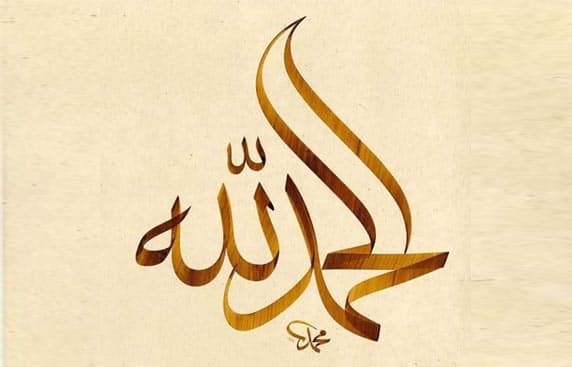Manuscript Calligraphy
You simply cannot study calligraphy without coming across one of its most noted writing styles, which is manuscript calligraphy. The mastery of this font style will take work, but there are many instances where you will be able to use it. Manuscript calligraphy is a script-style font, most notably used in the writing of formal or official documents. This writing style is precise and follows more strict guidelines in terms of properly forming letters. It takes more practice to master the very distinct shapes and curves of manuscript calligraphy.
This is why manuscript calligraphy is widely used for wedding invitations, certificates and even diplomas. While there are many calligraphy fonts that are more suited for creativity and artwork, manuscript calligraphy is more commonly used for formal writing projects. Learning to write manuscript calligraphy takes time because of the specific angles and the way each letter must be of a certain shape and size. Just to learn how the letters flow together and get the spacing just right requires time spent in study and application.
It is important in learning manuscript calligraphy that you are using the correct calligraphy pen. A fine grade nib would work very well because you need to capture the detailing of the rounded, script style of the letters and numbers.
It takes time to learn how to angle the pen nib properly; when to apply more pressure; and how to turn the nib to get a thin or thick line as needed.
When first learning manuscript calligraphy, you may find your hand becoming tired, so take breaks and rest your hand/wrist when needed. A practice session of 20-30 minutes per day should be enough time to get your practice in without causing pain, stiffness or cramping to your hand.
One of the reasons why manuscript calligraphy is so beloved and widely-used is because it looks a lot like a fancier version of regular cursive handwriting. It looks formal without being impersonal or cold.
When complete, your writing should look very elegant and professional, lending that official-looking vibe to your words. You’ll find that as you’re learning this writing style, the letter forms and strokes follow a precise pattern, so the end result looks very uniform, skillful and clean.
Although your own personality and writing style comes through in any kind of calligraphy writing, manuscript calligraphy is held to more strict guidelines of right and wrong form. The letters and lines follow a standard, with spacing between and size of the letters important components in successfully working with this lettering style.
Although this is a more regimented style of calligraphy, don’t let that scare you away from learning it. It is one of the most elegant, stylish forms of calligraphy, and your everyday handwriting will truly benefit and improve from learning it.
While manuscript calligraphy takes much practice and concentration, you will use it over and over again for any kind of formal pieces you need. It is one of those calligraphy writing styles that is a standard and almost something you should consider a must to learn.

